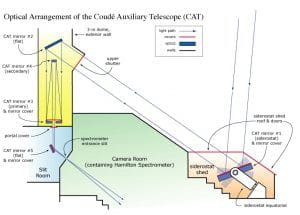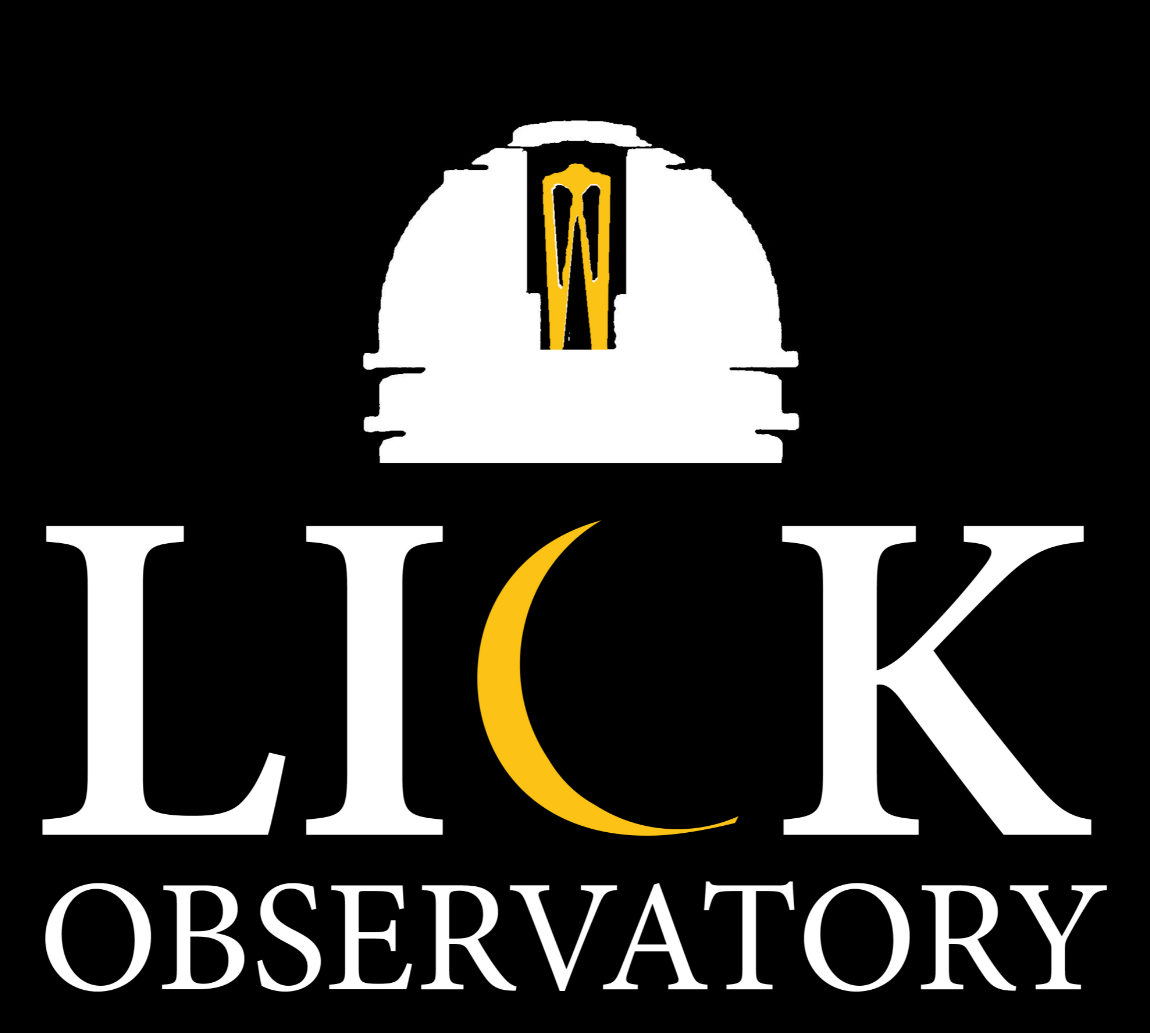Coudé Auxiliary Telescope
The Coudé Auxiliary Telescope (CAT) was built in 1969 to maximize use of the Hamilton Echelle Spectrograph. The CAT can be used to observe with the Hamilton Echelle spectrograph during any time that Shane telescope observers are using Cassegrain or prime focus instruments. The 24-inch CAT reflecting telescope is mounted in a stationary position at a fixed focus in a metal building adjacent to the Shane dome. This building can be seen on the right side in the Shane dome photos taken in 2004 and 1980, but not in 1960 photo. A flat mirror directs light from the observed object to the CAT, which in turn beams the light to the Hamilton Echelle spectrograph.
Information for Observers

Since the 24-inch CAT gathers much less light than the 120-inch Shane, the CAT is typically used to observe brighter stars. The CAT is often used in projects which require many nights of observation or large samples of stars, leaving the more popular Shane telescope available for research that requires less frequent observing time.
Currently the CAT telescope is only available on a restricted basis. Users who with to apply for CAT time should contact the Lick Observatory support astronomers before submitting a request.

